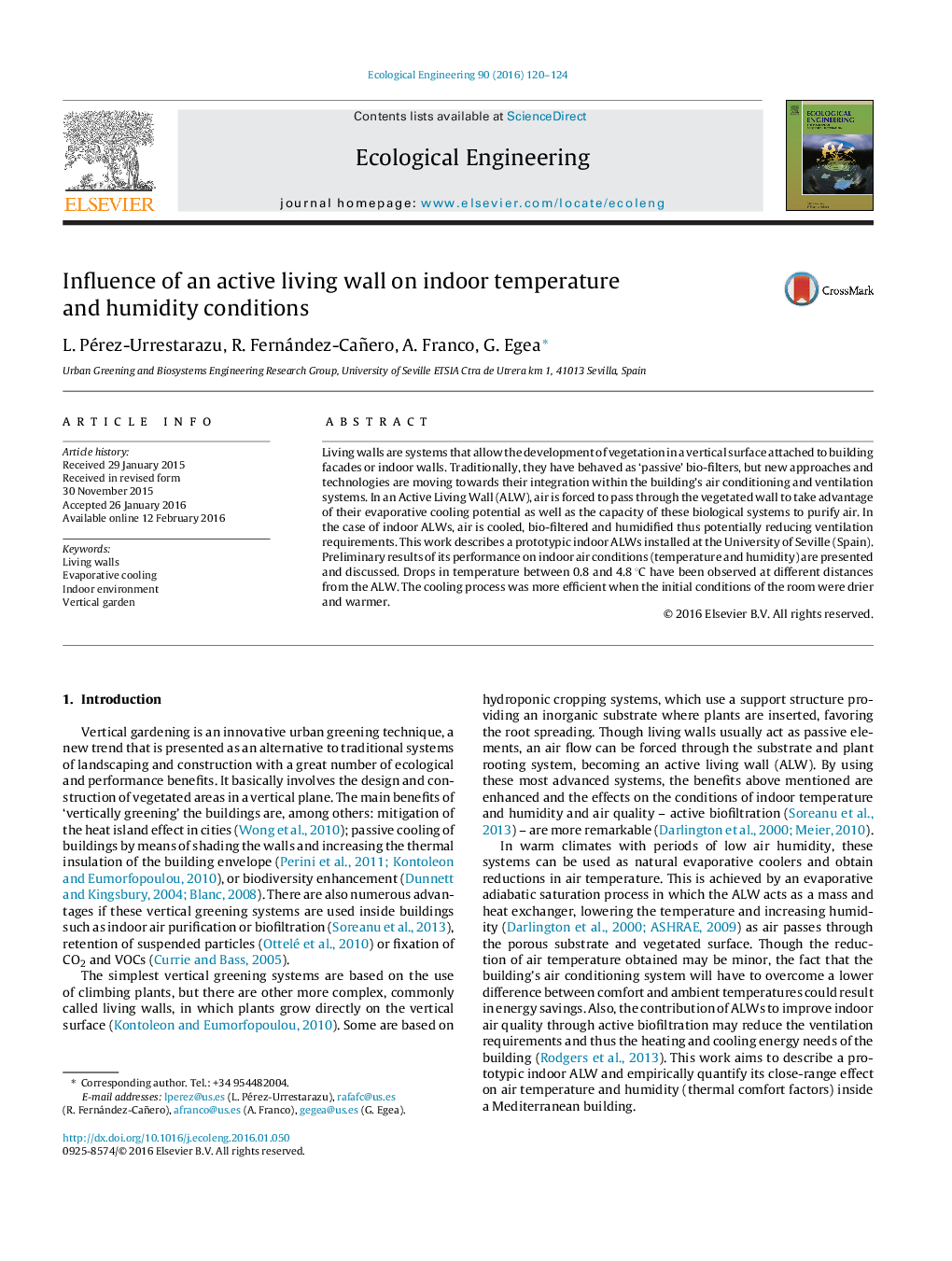| کد مقاله | کد نشریه | سال انتشار | مقاله انگلیسی | نسخه تمام متن |
|---|---|---|---|---|
| 4388654 | 1618009 | 2016 | 5 صفحه PDF | دانلود رایگان |
• Active Living Walls (ALW) cool, bio-filter and humidify indoor air.
• In ALW plants grow directly on a vertical surface through which an air flow is forced.
• Drops in temperature between 0.8 and 4.8 °C were observed during ALW operation.
• The cooling process is more efficient under drier and warmer initial air conditions.
• Saturation efficiency (η) of the system ranged within the interval 0.36–0.46.
Living walls are systems that allow the development of vegetation in a vertical surface attached to building facades or indoor walls. Traditionally, they have behaved as ‘passive’ bio-filters, but new approaches and technologies are moving towards their integration within the building's air conditioning and ventilation systems. In an Active Living Wall (ALW), air is forced to pass through the vegetated wall to take advantage of their evaporative cooling potential as well as the capacity of these biological systems to purify air. In the case of indoor ALWs, air is cooled, bio-filtered and humidified thus potentially reducing ventilation requirements. This work describes a prototypic indoor ALWs installed at the University of Seville (Spain). Preliminary results of its performance on indoor air conditions (temperature and humidity) are presented and discussed. Drops in temperature between 0.8 and 4.8 °C have been observed at different distances from the ALW. The cooling process was more efficient when the initial conditions of the room were drier and warmer.
Figure optionsDownload as PowerPoint slide
Journal: Ecological Engineering - Volume 90, May 2016, Pages 120–124
